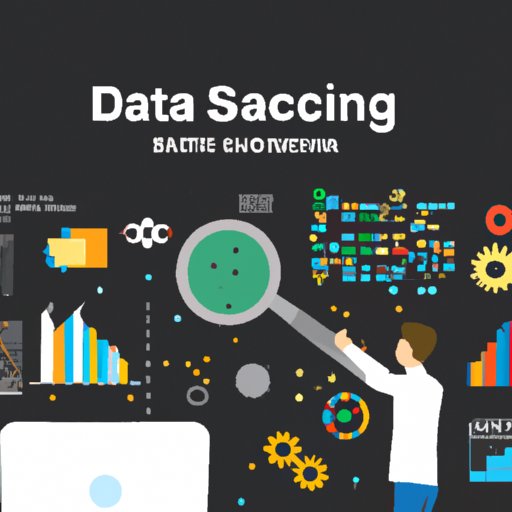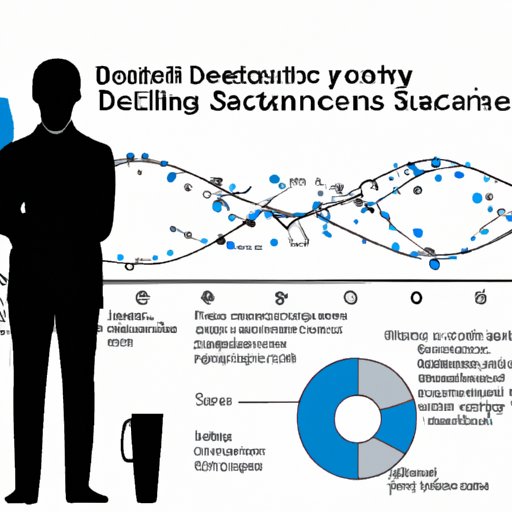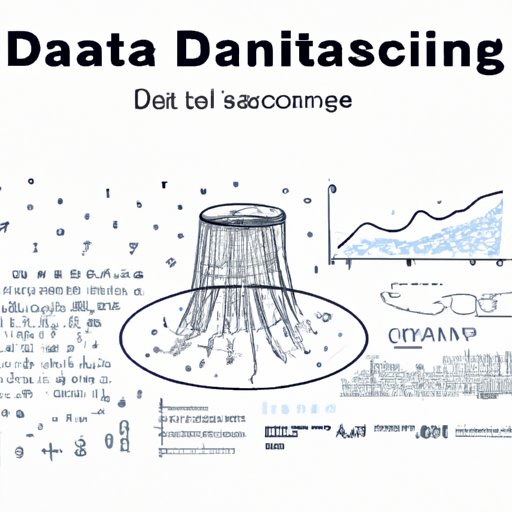Introduction
Data science is an interdisciplinary field which combines mathematics, computer science, and analytics to draw insights from large datasets. It’s a rapidly growing field that has applications in a variety of industries, from finance and healthcare to retail and entertainment.

Exploring the Different Types of Data Science Projects
Data scientists use various methods to analyze and interpret data, each with its own advantages and disadvantages. Let’s take a look at some of the most common types of data science projects:
Machine Learning
Machine learning is a type of artificial intelligence that uses algorithms to learn from data, identify patterns, and make predictions. It’s commonly used for predictive analytics and automated decision-making. Examples include facial recognition, spam filters, and recommendation engines.
Natural Language Processing
Natural language processing (NLP) is a branch of artificial intelligence which deals with analyzing and understanding human language. It’s used for tasks such as sentiment analysis, text classification, and text summarization. NLP is often used in customer service bots and virtual assistants.
Data Mining
Data mining is the process of extracting useful information from large datasets. It involves cleaning, transforming, and analyzing data to uncover meaningful patterns and trends. It’s commonly used in marketing, fraud detection, and risk assessment.
Deep Learning
Deep learning is a subset of machine learning which focuses on using neural networks to solve complex problems. Unlike traditional machine learning, deep learning can process raw data without the need for feature engineering. It’s often used for image recognition, speech recognition, and natural language processing.

Examining the Tools Used in Data Science
Data scientists use a variety of tools to analyze and interpret data. Some of the most common tools are programming languages, database management systems, and statistical software.
Programming Languages
Data scientists often use programming languages such as Python, R, and Java to write code to automate tasks and manipulate data. These languages allow data scientists to quickly analyze and visualize data, build models, and deploy applications.
Database Management Systems
Data scientists use database management systems such as MySQL, Oracle, and MongoDB to store and manage data. These systems provide powerful search and query capabilities that enable data scientists to quickly find the information they need.
Statistical Software
Data scientists use statistical software such as SAS, SPSS, and Minitab to analyze data and generate insights. These programs are designed to make it easy to run tests, create visualizations, and interpret results.

A Look at the Challenges Facing Data Scientists
Data science is a rapidly evolving field, and there are many challenges that data scientists face. Some of the most common challenges are keeping up with technology, leveraging big data, and analyzing unstructured data.
Keeping Up With Technology
Data science is a fast-moving field, and data scientists must constantly stay up-to-date with new technologies, trends, and best practices. To do this, data scientists must be willing to learn new skills and stay abreast of developments in their field.
Leveraging Big Data
Data scientists must be able to handle large amounts of data, and have the experience and expertise to extract valuable insights from it. This requires data scientists to understand how to access, clean, and analyze data, as well as have a good understanding of the underlying business needs.
Analyzing Unstructured Data
Data scientists must also be able to analyze unstructured data such as text, images, and videos. This requires a combination of technical skills and domain expertise to draw meaningful insights from these types of data.
Profiling Successful Data Scientists and their Work
To get a better understanding of the data science field, it’s helpful to look at the work of successful data scientists. Learning about their successes and failures can provide insight into the challenges and opportunities of the field.
Case Studies
Studying case studies of successful data science projects can provide valuable insight into the process of creating effective solutions. Examining how data scientists have tackled problems in different industries can help give context to the work being done in the field.
Expert Interviews
Interviewing data scientists can also provide valuable insight into the field. Experienced data scientists can share their experiences, offer advice, and explain the challenges they’ve faced while working on data science projects.
Conclusion
Data science is a rapidly growing field that has applications in a variety of industries. It involves exploring different types of projects, leveraging various tools, and overcoming numerous challenges. By profiling successful data scientists and studying their work, we can gain a better understanding of the field and the opportunities it presents.
(Note: Is this article not meeting your expectations? Do you have knowledge or insights to share? Unlock new opportunities and expand your reach by joining our authors team. Click Registration to join us and share your expertise with our readers.)
